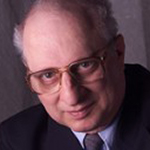March 6, 2014
Sleep and its difficulties
It is not completely clear as to why we need sleep, but its necessity is. It is something we share with pretty well all of the other members of the animal kingdom. Sleep appears to give the body and brain the opportunity to repair, lessen stress and anxiety, and aid in memory and learning.
Sleep is not a single process. It occurs in stages which are classified as REM (rapid-eye movement) and non-REM. The beginning stage is non-REM, between wakefulness and sleep. Next, sleep becomes more entrenched, followed by deep sleep. Then REM sleep sets in, a period where most dreaming occurs. During sleep, the stages will normally cycle a few times, not always in the same order. REM sleep appears important in ability to learn complex tasks, as found when it has been experimentally interrupted.
According to Dr. Elliott Lee, a Royal Ottawa Hospital sleep specialist, adequate sleep for an average adult is from 7 ½ to 8 ½ hours. Almost half of all Canadians get by on less, as a result of which there are negative consequences. Speed and accuracy of cognition are reduced. He pointed out that sleep deficits were implicated in the Challenger failure, the Chernobyl disaster, the Exxon Valdez accident, and in many medical errors. Even the minor shift involved in implementing daylight savings time affects accident rates, with an increase in the number of accidents when we lose an hour in springtime implementation and a reduction in the number when, in the fall, we have an extra hour to sleep.
In one study that he cited, women who had less than five hours a night of sleep had an average 2.5 pounds of weight gain compared to a group of women who got more than seven hours. Children who are sleep-deprived become fidgety and cranky and have symptoms similar to ADHD (attention deficit hyperactivity disorder). Sleep impairment is similar in effect to alcohol impairment. Many motor vehicle accidents are implicated in sleepiness.
If sleep is fragile, the consequences are the same as experienced in sleeplessness—problems with memory, decreased ability to concentrate, and irritability. At Guantánamo, Omar Khadr was subjected to a torture called the Frequent Flyer Program, which consisted in several days of being awakened every 15 minutes and moved to a different location, to disorient him.
To get a good night’s sleep, try to keep a regular bed time, and avoid stressful situations and stimulation prior to sleep. Avoid clock watching, and no bright light. A warm bath can help, and temperature in the room should be less than 21 to 22 degrees Celsius.
We have noted some things to avoid. Other things that can inhibit sleep are caffeine, nicotine, alcohol, marihuana, amphetamines, cocaine, and opioids. One should have no more than 400 mg. of caffeine a day, as it can interfere with maintaining sleep.
Timing of sleep is also important. The longer we are awake, the more we need sleep. As Lee put it, during the day we build up a sleep debt which is paid off when we go to bed. The circadian rhythm is another factor. The term circadian comes from the Latin circā meaning approximately and dies meaning day. The body has a rhythm of approximately 24 hours, detecting a time for sleep and a time for wakefulness. The rhythm is sensitive to light, which functions as a zeitgeber. That is German for time-giver.
Because of the circadian rhythm, which tells us when to be awake and when to sleep, many people who are on shift work have problems sleeping. Shift work has health risks associated with it, both mental and physical. Cancer rates are higher for shift workers, breast cancer for instance.
To aid shift workers get enough sleep, it is important to have complete darkness at bedtime. The body produces a substance called melatonin which aids in producing drowsiness and in lowering body temperature. A controlled dose of melatonin may aid in sleep, especially in conjunction with light therapy, using high intensity light when a wakeful state is called for.
At a lecture at the Royal Ottawa Hospital, Lee spoke of obstructive sleep apnea, often called sleep apnea, or simply apnea. This is a temporary disruption of breathing, usually without recall. A consequence may be daytime sleepiness. As many as a fourth of all men and 9% of women have sleep apnea, and 90% of them are unaware. Half of all snorers are thought to have it. The condition is associated with greater risk of cardiac disease, irritability, mental illness, reflux, and memory problems. And by the way, it can sometimes be fatal.
There are various treatments for apnea, some quite invasive. Tonsillectomy is a common one, especially for children. Among non-surgical approaches are weight loss, as obesity is often a factor, and avoiding alcohol and sedatives. Dr. Lee told of a man who used his wife’s brassiere, filling it with tennis balls and putting it on backwards, so that he could not sleep on his back.
Some surgical methods are uvulopalatophrangoplasty (UPPP), the removal of various tissues in the mouth and throat, an approach with variable success. Maxillomandibular advancement is even more intrusive, involving bone surgery to move the lower jaw forward. Then there is the possibility of tracheotomy, to bypass any obstructions completely.
On the non-surgical side is the CPAP, continuous positive airway pressure machine, which forces air into the airway to keep it open. Operating on a similar principle CPAP, provent therapy (suitable in mild to moderate conditions) uses the pressure of exhaling to keep the airway open.
Lee also discussed narcolepsy, a condition which involves daytime sleepiness, often accompanied by nighttime insomnia. The condition is difficult to recognize and is largely undiagnosed. Most sufferers also have cataplexy, where REM symptoms intrude on wakefulness. Stimulants are often prescribed for narcolepsy and antidepressants for cataplexy.








